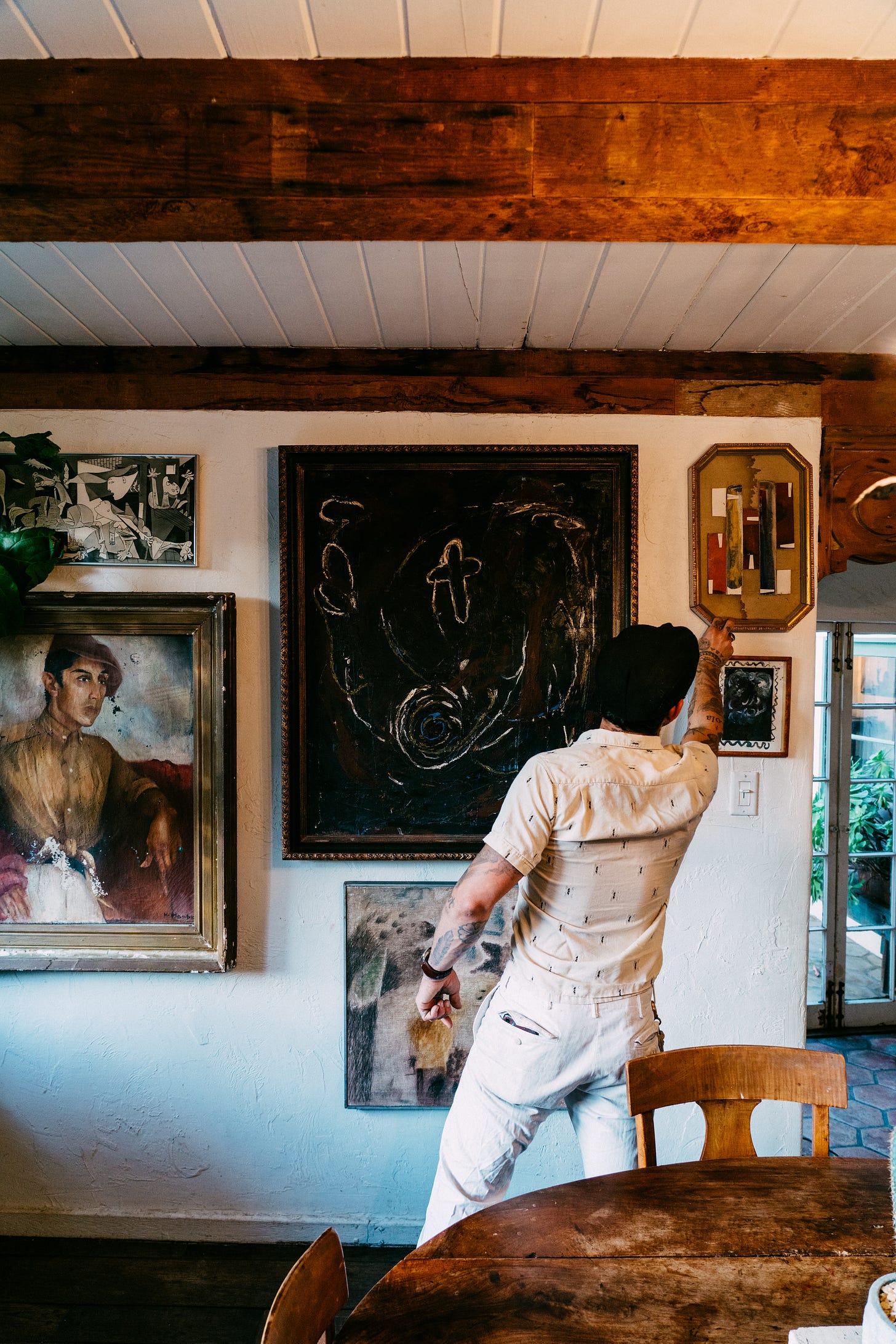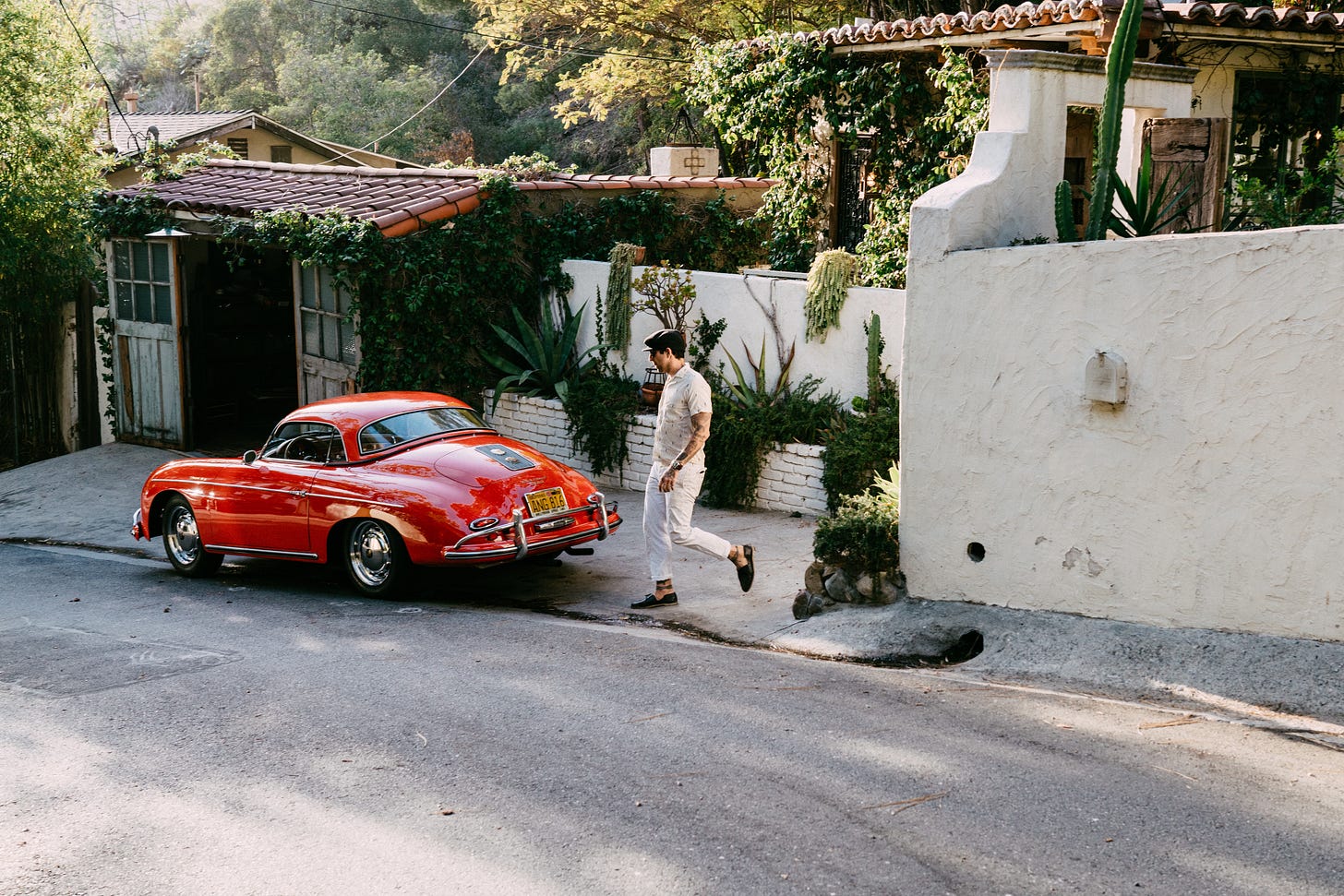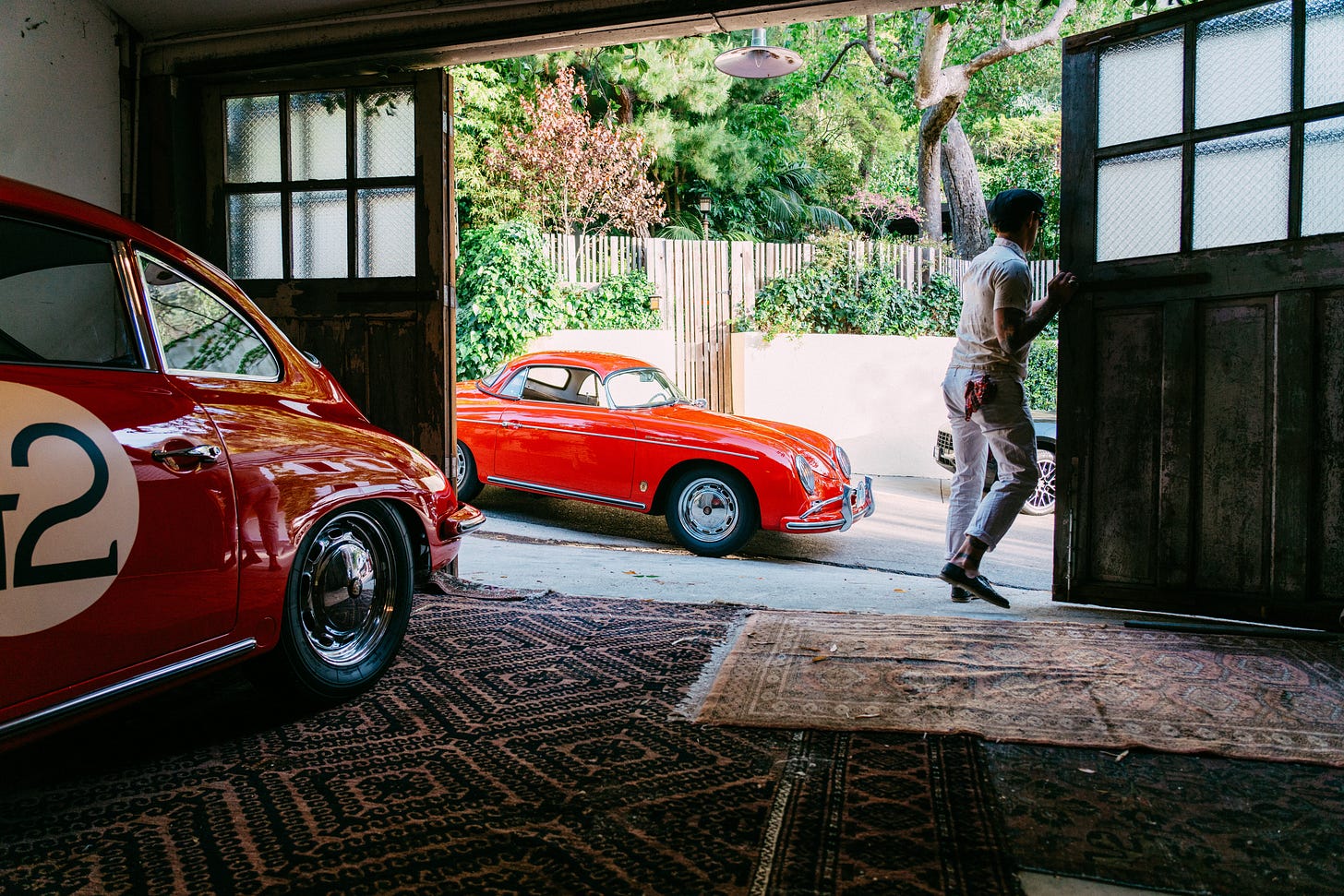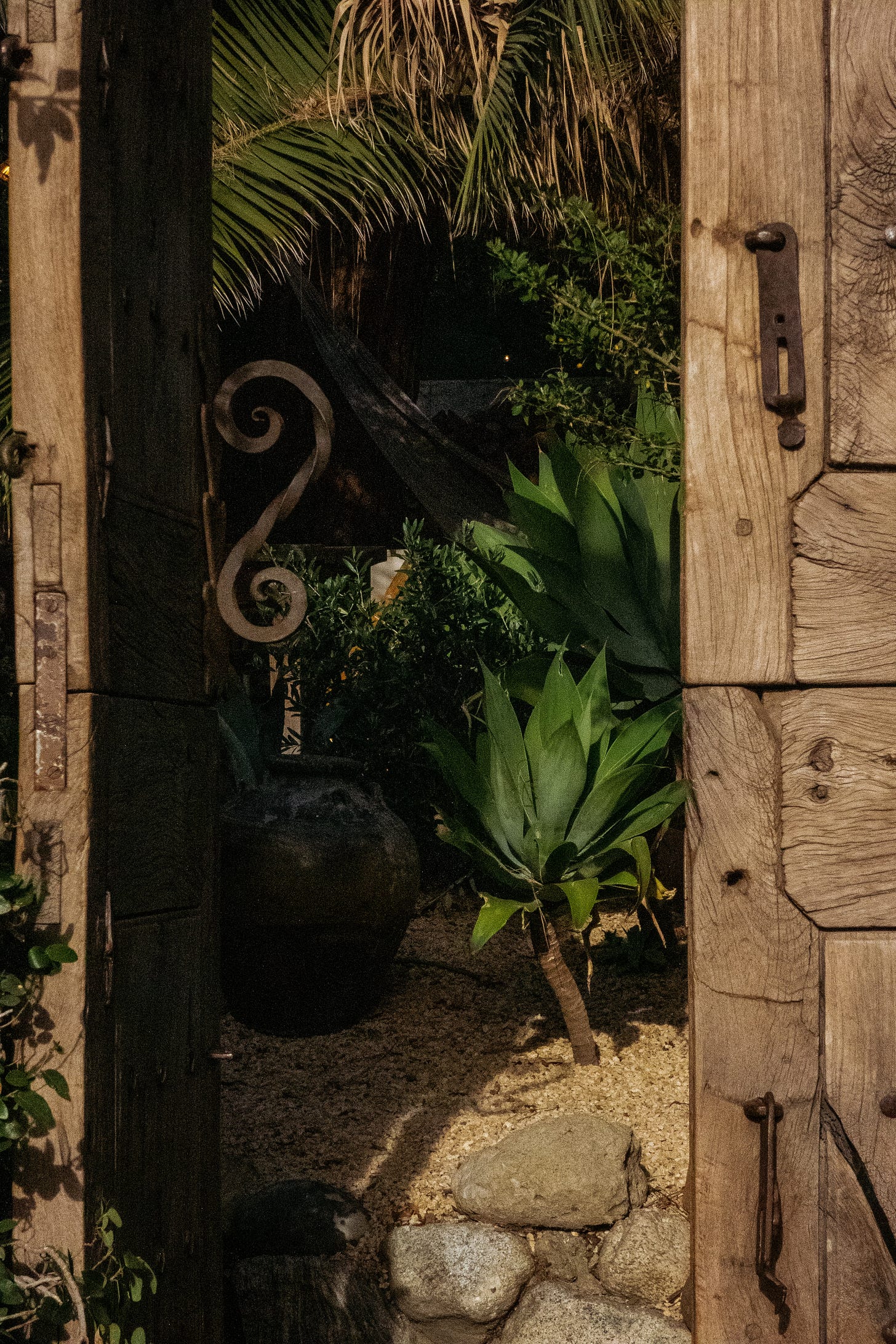Wisdom Of The Caretaker
A Conversation With Matt Winter
And we’re back. It’s been a busy couple weeks out there in the real world. The final steps towards opening the doors of our new business in Nashville were taken and as of earlier this week we’re “legal”. More on that next week when I’ve actually had a chance to catch my breath and wrap my head around the moment.
Presently, I’m enjoying the trip down memory lane that going through this particular story has sent me on. This was a fun one to shoot and write. It was a breezy afternoon in LA when I headed out to meet Matt Winter at his home. I was on a Harley if I remember correctly, the smell of night blooming jasmine filled my helmet as I headed up the canyon road. It was one of those evenings that turned just cool enough to warrant throwing some logs in the hearth and starting a fire…
Cheers - AM
This story originally appeared in Issue Two of The Motoring Journal:
Time travel is endlessly fascinating to human beings because time is one of the few things we haven’t managed to gain control over no matter how hard we try. It’s the great equalizer, one of the things that no matter how wealthy or how poor you are, you have the same amount of it to work with. For some, this realization is a curse, and they’re endlessly in pursuit of more while stressing out about not having enough. For others, it’s comforting to know that regardless of what may be going on in life, there’s the same amount of hours in the day for everyone. The older I get, the more I think about this, though I suspect that someone like Matt Winter has grasped this concept for years. I met Winter awhile back at a cars-and-coffee thing — neither of us can remember exactly which one or when — but we agreed that we recognized each other at Rennsport Reunion in 2018 and talked a bit about the pre-Daytona Cosmograph he was wearing that had belonged to his father.
“Rolex has been a part of my life since I can remember because the watch I’m wearing now, which I share custody of with my brother, was my father’s. It’s a 1969 pre-Daytona Cosmograph, white gold on the inside and stainless steel on the outside. In 1971 he went to Rolex because he wanted a two-tone watch and asked them to alter it by adding a gold bezel and gold crown. So they did it, and to this day I’ve only seen one other that was made for a race car driver. After my dad passed away, the watch took on even more meaning to me as a daily connection to him. Even just by doing the same motion of winding the watch to keep it running as he would have, it makes me feel his presence.””
I didn’t know much about Winter before rolling up to his little slice of Eden tucked away off a shady canyon road to the east of Beverly Hills. I knew he was roughly as old as I am, that he’d grown up in LA, had a couple classic Porsches, a Land Rover, some vintage Rolexes, and shared my taste in tattoos. Apart from that general information, which could easily be gleaned off of Instagram, I didn’t know much about the guy, which made hanging out with him for a couple hours at home, along with his lovely wife and hilarious kids, that much more interesting. Anybody who opens up their home for photography and an interview on a weeknight during “the witching hour” (as many parents call it) is more than alright by me.
Winter might look intimidating to some, all covered in tattoos and sporting a couple of gold teeth, but there’s a big heart and a real joyful nature about him that’s quickly apparent once you get him talking — which, like myself, he is happy to do if there’s some depth to the conversation. Not always the case when talking cars and watches, but thankfully it’s the deep stuff Winter is most interested in when it comes to “things.”
“So my whole gig is respecting the bones of everything and following the history of the past. What it was in order to give it new life and honor the spirit of the thing, whether it’s a building or watches or cars or motorcycles,” says Winter. “I’m always trying to find whatever bits of history are left in there and honor them and learn from the bones. I’m about supporting the story rather than just modernizing. A lot of the architectural and interior-design projects I’ve worked on, the building has been something else, and we’re tasked with making a restaurant out of a gas station, or a bar out of an old brick mill building. The bones tell us what to do. I follow the color schemes, the material themes, and by doing so we can bring in a new use for that space. It may be a house or a car, but there’s always bits of patina you can find, and those details end up being the master of the project, not myself.”
Hearing this reminded me of a saying I either heard at a car meet or read in a magazine once, and I’m paraphrasing here, but it was something like, “You don’t own a car, a watch or a house; you’re merely the caretaker of the thing or the place while you’re around, and when you move on, whether by choice or by nature doing what nature does, a new caretaker comes around and adds their own chapter to the story.”
Profound? I like to think so. Grandiose? Perhaps. Either way, there’s no denying that things with a history have a distinctly different effect on humans than things that are brand-new. Again, I think it’s about time, and our fascination with the passage of it and desire to be able to manipulate it. To some degree I think that’s exactly what Winter does within a space, be it a building or vehicle.
“Especially with cars, like the Pre-A Speedster I have, I do think of it as being a temporary custodian,” he shares. “The guy who owned it before me had it for 58 years, and I’m taking something that essentially has an entire life in it. I bought it from his widow and explained to her that I wanted to honor what her husband had put into it, keep it as original as possible, keep it on the road, maintain it, and maintain the legacy. The spider-cracked shift knob that he shifted gears with for 58 years, I’m not going to replace that with a new one; it tells the story of a person in motion over a period of time.”
Before I could respond in gleeful agreement, Winter continued, “356’s are all really valuable cars, but by keeping some of the grit, it allows you to enjoy them and drive them, rather than bringing a car up to a concours-winning level where you’re not going to want to sit in it or drive it hard. We rip my cars all over town; I’m driving the ’64 SC or Speedster two to three days a week, and that’s a lot for these cars. The same goes for this house, which was built in 1924 for Jean Harlow, but it’s not a museum; this is our home. My kids run around, break shit, and I repair it, clean their drawings off the original plaster walls — that’s just how it goes.”
“Things produced in that just pre-war and post-war era are like art pieces to me, but they were just part of everyday life. Most of my home is a collection of still-working items from that era: the fridge, the stove, all sorts of little items. They just last with a little work to keep them running.”
I found it really refreshing that Winter wasn’t super precious about these things, as many of the collectors and caretakers I’ve met over the years are. Respectful, certainly, but there’s little to no pretense when it comes to the things he cares about. To that point, when his younger daughter, Lola, dropped in on our conversation, he asked her to contribute to it rather than shoo her away as many adults would. And I’m glad that was the case, because now I can share that her favorite room in the house is her bedroom, because it has all her stuff in there, and her favorite place outside is in the hammock. As for Winter’s older daughter, Scout, her favorite room is the master bedroom, which is the oldest part of the structure and was essentially a standalone cabin that was added onto continuously over the course of the 20th century.
As for the girls’ favorite cars, Lola prefers the Speedster and Scout prefers “Little Red,” aka the twin-grille Super Carrera. Clearly they’ve inherited their father’s good taste. Perhaps they’ll have a future within the interior-design and architecture world, which Winter would certainly support, as he says he and his wife, Tara, are raising “little badasses full of entrepreneurial spirit.”
If an eye for design does run in the family, then Lola and Scout will be set up for success, as Winter’s creative eye has yielded impressive results, including Manuela at Hauser & Wirth Gallery in downtown LA, Gjusta Bakery in Venice, Johnnie’s Pastrami Bar and Restaurant in West Adams, and, most recently, All Season Brewing Company in the iconic Firestone Tire building on La Brea Boulevard. From the moment you step into any of the above spaces, you’re acutely aware that everything from floor to ceiling has been done with intention.
Having spent a great deal of time in spaces designed by Winter over the years (some of which I had no idea he worked on until we chatted), and now having gotten to know him better, it’s clear how much of himself he pours into each project. There is a very real and tangible connection between Winter and the buildings he works on. Little pieces of him are clearly left in every project, and they include his affinity for old cars and vintage watches, his dedication to his family, and his deep respect for those who came before us. Finding a balance between respecting a legacy and not being precious about history is a difficult thing to do without going into the territory of caricature, but with M. Winter Design, Winter has managed to achieve equilibrium in a tough field in just over a decade. There’s no other way to explain it other than not being afraid of hard work and staying true to yourself on a day-to-day basis. Cheers to that.


















